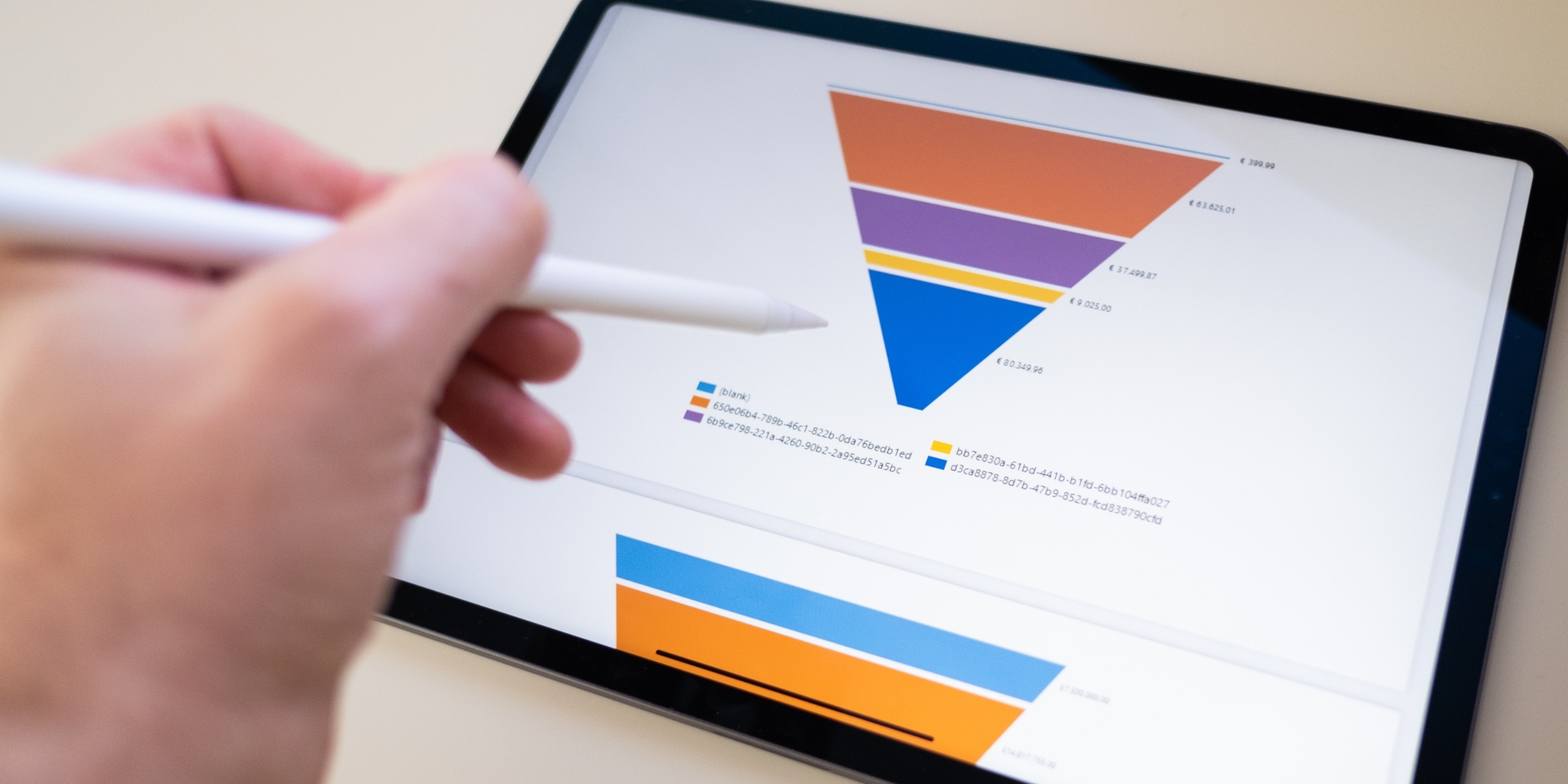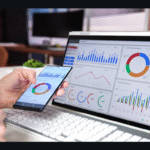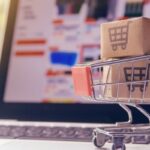The marketing funnel is a series of steps that lead potential customers from the point of discovering your brand to a purchase and, afterward, to being a repeat customer. Familiarizing yourself with the funnel will enable you to target your audience with the right message at the right time. Each stage of the funnel (awareness, interest, consideration, decision, and retention) will require different tactics to continue moving leads down the funnel. Knowing which stage your customer is in can make a significant difference in your final result, whether you are running ads, writing blog posts, or sending emails.
Many businesses make mistakes, either ignoring lead nurturing altogether or focusing on sales alone, which can lead to slow growth and wasted marketing dollars. In this guide, we will identify the key stages of the marketing funnel, include proven tactics to use for each stage, and note the key mistakes to avoid.
What Is Marketing Funnel
A marketing funnel is a schematic for illustrating the path a customer takes from the first time they learn about a brand until they purchase and become a loyal customer. The funnel is considered a funnel because many people enter at the top, while only a few end up at the bottom as paying customers. The marketing funnel has stages, including Awareness, Interest, Consideration, Intent, Purchase, and Loyalty. At every stage of the funnel, marketers use different techniques to influence the conversion of leads.
Why is it important for business growth
The marketing funnel is important for business growth because it helps guide potential customers through a clear path — from awareness to purchase and beyond.
1. Better Targeting: You understand what your audience needs at each stage, and you can deliver the right message at the right time.
2. Improved Conversion Rates: By nurturing leads step-by-step, you increase the chances of turning them into paying customers.
3. Efficient Use of Resources: It helps allocate your marketing budget wisely by focusing on high-impact tactics at each stage.
4. Customer Retention: Funnels don’t stop at the sale — they continue with loyalty and advocacy stages, helping you grow through repeat business and referrals.
5. Measurable Growth: You can track where prospects drop off and optimize accordingly, ensuring steady improvement and business growth.
Key Stages of the Marketing Funnel
- Awareness Stage:
- Goal: Let people know your brand exists.
- Tactics: Social media, SEO, online ads, blogs.
- Example: A person sees your Instagram reel or Google ad.
- Interest
- Goal: Get potential customers curious and engaged.
- Tactics: Email sign-ups, webinars, explainer videos.
- Example: They visit your website and explore products.
- Consideration
- Goal: Show why your solution is the right choice.
- Tactics: Testimonials, case studies, comparison guides.
- Example: They compare your offering with competitors.
- Loyalty & Advocacy (Post-Purchase)
- Goal: Turn buyers into repeat customers and brand advocates.
- Tactics: Loyalty programs, referral bonuses, feedback requests.
- Example: They leave a review or refer friends.
- Advocacy
- Goal: Turn loyal customers into brand advocates.
- Tactics: Referral programs, testimonials, user-generated content.
- Example: A loyal customer shares a glowing review and recommends the brand on social media, influencing others to try the product.
Effective Tactics at Each Stage of the Marketing Funnel
“Effective Strategies at Each Stage of the Marketing Funnel” means you are using the right marketing strategies at the right time based on where your potential buyer is in their journey — from becoming aware of your brand to being a loyal customer.
Awareness Stage – Grab Attention
Goal: Make your target audience aware of your brand.
- Social Media Ads: Run visual ads on platforms like Instagram, YouTube, or Facebook to introduce your brand to new people.
- Influencer Collaborations: Partner with influencers in your niche to reach their followers and build instant credibility.
- Video Marketing: Use short, engaging videos (like Reels or YouTube Shorts) to explain who you are and what you do.
- Press Releases & PR: Get featured in media outlets to boost visibility and brand authority.
Consideration Stage – Build Interest
Goal: Educate prospects and guide them toward a decision.
- Email Marketing Campaigns: Send value-packed emails that nurture leads with tips, product info, or helpful guides.
- Webinars & Product Demos: Show your product in action, answer questions, and demonstrate the benefits live.
- Customer Testimonials: Share real customer stories to build trust and social proof.
- Comparison & Buying Guides: Help users compare options, making it easier for them to choose you.
- Retargeting Ads: Show ads to people who’ve visited your site but didn’t convert, keeping your brand top of mind.
Conversion Stage – Drive Sales
Goal: Turn leads into paying customers.
- Limited-Time Offers: Uses scarcity and urgency (like “24-hour sale”) to encourage quick action.
- Free Trials or Samples: Let users try before they buy, lowering the risk of purchase.
- Clear CTAs on Landing Pages: Guide visitors with strong calls to action like “Buy Now” or “Book a Demo.”
- Live Chat or Chatbots: Answer last-minute questions instantly to reduce drop-offs.
- Money-Back Guarantees: Increase trust by offering refunds if customers aren’t satisfied.
Loyalty & Advocacy Stage
Goal: Retain customers and encourage word-of-mouth.
- Loyalty Rewards Programs: Offer points, discounts, or gifts for continued purchases.
- Personalized Email Offers: Use customer data to send relevant deals based on past behavior.
- Customer Support & Follow-Up: Solve issues quickly and follow up to improve satisfaction.
- Exclusive Access: Gives loyal customers early access to products, sales, or updates.
- Social Media Engagement: Keeps communication open through regular social media interactions.
Common Mistakes to Avoid
Trying to Skip Stages
Every stage of the marketing funnel—awareness, interest, decision, and action—is important. Jumping directly to sales without first building awareness or trust often leads to poor conversion rates.
Example: Pushing for a sale before building awareness or trust with your audience.
Poor Targeting or Generic Messaging
If your message speaks to everyone, it connects with no one. Vague or broad marketing fails to attract the right audience. Instead, define your ideal customer and create tailored content that addresses their needs and pain points.
Example: Sending the same message to everyone without considering their interests or needs.
Not Tracking Data or ROI
Without tracking key metrics, you won’t know what’s working. Use tools like Google Analytics, Facebook Ads Manager, or CRM software to measure performance and adjust your strategy accordingly.
Example: Running campaigns without measuring performance or knowing if they’re profitable.
Ignoring Existing Customers
Most businesses focus too much on new leads and forget about current customers. However, loyal customers can bring repeat sales, referrals, and advocacy. Keep them engaged with email campaigns, rewards, and regular updates.
Example: Not following up with past buyers or offering them any loyalty rewards.
Weak Calls-to-Action (CTAs)
A marketing funnel without strong CTAs is like a road with no signs. Tell users exactly what to do next—whether it’s signing up, buying, or downloading. Use clear, action-oriented language to drive results.
Example: “Click here” without explaining why or what happens next.
How to Improve Funnel Performance
Improving funnel performance means optimizing every stage of your marketing funnel—from awareness to conversion—so that more leads move smoothly toward becoming paying customers.
Run Regular Funnel Audits
- Why it matters: Regular audits help identify where users drop off.
- How to do it: Analyze metrics like bounce rate, time on page, and conversion rates at each stage.
- Example: If many users visit your landing page but few signup, your message or CTA may need tweaking.
A/B Test Landing Pages and CTAs
- Why it matters: Even small changes can significantly improve conversions.
- How to do it: Test different headlines, button text, images, layouts, and offers.
- Example: Try two versions of a signup form—one with fewer fields and one with a special discount—to see which performs better.
Use Heatmaps to Analyze User Behavior
- Why it matters: Heatmaps show how visitors interact with your website.
- How to do it: Use tools like Hotjar or Crazy Egg to see where users click, scroll, and stop.
- Example: If users aren’t scrolling to your CTA, move it higher up on the page.
Segment Your Audience
- Why it matters: Not all visitors are the same—personalized experiences perform better.
- How to do it: Group users by behavior, demographics, or source of traffic and tailor content accordingly.
- Example: New visitors get educational content; returning users see special offers.
Tips for Building a Successful Marketing Funnel
Building a high-converting marketing funnel requires strategy, consistency, and ongoing improvements.
Know Your Audience
Identifying your target audience is the pillar of every successful funnel. It can be accomplished through data, surveys, or customer feedback to discover your audience’s needs, pain points, and purchasing habits. The more you know your audience, the more relevant and personalized your funnel will be.
Map Content to Each Stage
To improve funnel performance, it’s important to create and deliver the right content at the right stage of the buyer’s journey. This ensures your audience gets what they need to move forward.
Example:
- Awareness: Blogs, social media posts.
- Consideration: Case studies, product demos.
- Decision: Testimonials, free trials.
Use Marketing Tools
Leverage CRM platforms, email marketing software, analytics tools, and automation to streamline your funnel. These tools help track user behavior, segment audiences, and deliver personalized experiences at scale.
Test and Optimize Continuously
Funnel performance improves with testing. Run A/B tests on headlines, CTAs, landing pages, and email campaigns. Analyze the results, learn what works, and optimize accordingly. Continuous improvement ensures higher conversions over time.
Conclusion
Certain tactics deliver results through engagement and conversion, such as relevant content, an email automation system, or well-placed call-to-actions (CTAs). Being able to deliver methods like this through each funnel stage leads to the right message at the right time for potential customers, which is more efficient than simply taking them through the funnel.
Remaining aware of common mistakes, like avoiding stages in the funnel process, poor targeting of the funnel, and a lack of data analytics, is critical for optimizing the return on your investment (ROI) and maximizing growth opportunity. Ultimately, staying in tune with your methods, testing regularly, and optimizing what works in the funnel will lead to maximizing a sustainable business future.



